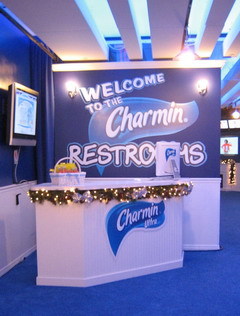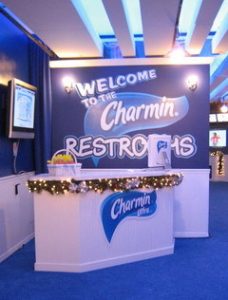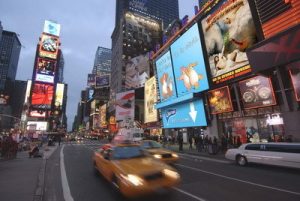This past holiday season, the ultimate branding experience was installed in New York’s Times Square. Procter & Gamble’s Charmin Ultra brand took over a 12,000-square-foot location and installed free luxury restrooms.
These accommodations were designed to generate trials and awareness for Charmin’s new product and bring to life the essence of the brand. With busy shoppers, armed with lots of packages and children in tow at the most hectic intersection during the most hectic time of year, don’t you think everyone was talking about it? And in only the most positive terms.
Marketers are trying just about anything to connect brands to their audience and separate themselves from the competition. Brands are everywhere, from mobile phone campaigns to product placements to fortune cookies.
Brands are even getting into the real estate game. You know that vacant storefront on Main Street? Don’t be surprised if a product takes over the space temporarily. It’s a marketing trend some call “pop-up retail.” We call it a “BrandScape” – infusing a brand seamlessly into the existing landscape of a town or city to create a completely targeted brand experience giving consumers the opportunity to touch/feel/play/try/use the product.
Advertisement
The first BrandScape was developed for Nintendo in 2001 to support the launch of its new GameCube console. The company identified vacant locations in 15 cities and built out each space with gaming stations, a deejay, refreshments and Nintendo characters. From outside, the space “fit” the existing landscape. Inside, fans were able to play with the new console and game titles in an environment that delivered on Nintendo’s brand promise of “ultimate gaming.”
Since that time, the BrandScape approach has been used by a number of marketers in a variety of ways: L’Oreal opened exclusive, temporary salons to launch its “Cut & Color” product. Song Airlines popped up in New York’s SoHo, inviting consumers into a space where they could sit in airline seats while staff served food and drinks. Campbell’s “soup sanctuary” consisted of a footprint that looked so much like a permanent part of the shopping malls that consumers wanted to buy soup, even though only complimentary samples were offered.
With so many brands getting it right with pop-up retail, it makes you wonder why more retailers don’t make greater use of the approach.
Some do. Apple comes to mind, but, of course, it was a brand before it became a retailer.
The list of those who don’t get it is longer. Gap, for example, has a flagship store in New York that’s no different from any other Gap. Shouldn’t the retailer attempt to make that location more memorable and involving with customers?
And we can’t just pick on Gap. There are countless retailers – from electronics stores to supermarkets – that need to make their stores places where shoppers can get more involved with the brand. Consumers want to be delighted, to be entertained. They even want to be educated. (Consumers often tell us the stores they enjoy most are the ones where they leave smarter than when they walked in.)
Advertisement
Ultimately, upgrading the retail experience will keep consumers around longer. And that leads to two crucial things: They’ll gain an understanding of what the brand stands for and accurately convey that essence to others. And they’ll buy more merchandise.
Isn’t that what retailing is all about?
John Palumbo is founder/ceo of BigHeads Network (Hoboken, N.J.).
Photography: Courtesy of BigHeads Network, Hoboken, N.J.


 Photo Gallery2 weeks ago
Photo Gallery2 weeks ago
 Headlines1 week ago
Headlines1 week ago
 Headlines2 weeks ago
Headlines2 weeks ago
 Headlines6 days ago
Headlines6 days ago
 Headlines1 week ago
Headlines1 week ago
 Designer Dozen2 weeks ago
Designer Dozen2 weeks ago
 Headlines2 weeks ago
Headlines2 weeks ago
















